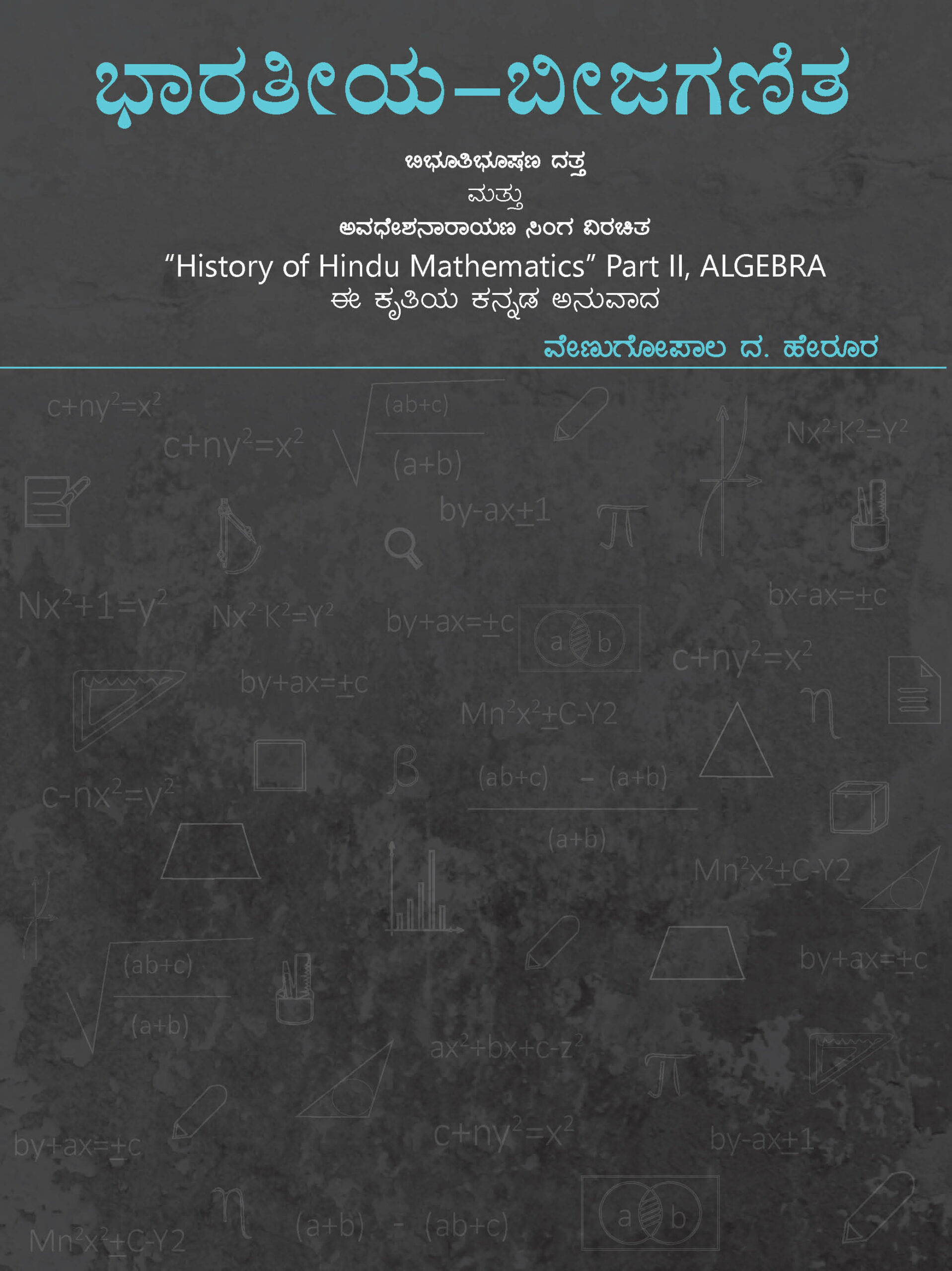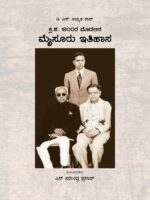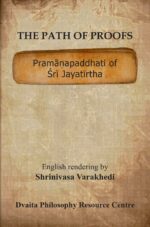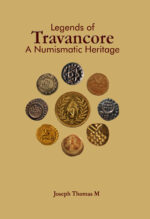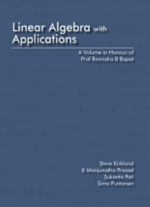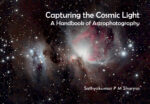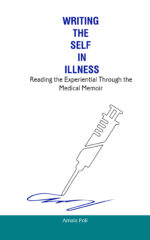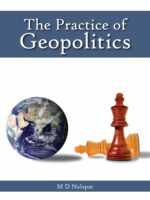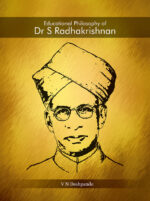Bharatiya Bijaganita
₹895.00
ಪ್ರಾಚೀನ ಭಾರತೀಯ-ಬೀಜಗಣಿತದಲ್ಲಿ ಅನಿರ್ಣೀತ ಸಮೀಕರಣಗಳ ಕುರಿತ ವಿಶ್ಲೇಷಣೆಯು (Indeterminate-analysis) ವಿಶೇಷ ಗಮನಾರ್ಹವಾದ ಸಂಗತಿಯಾಗಿದೆ. ಏಕಘಾತೀಯ ಅನಿರ್ಣೀತ ಸಮೀಕರಣಗಳ ಪರಿಹಾರಕ್ಕೆ ಸಂಬAಧಿಸಿದ ವಿಷಯದ ವಿಶ್ಲೇಷಣೆಯನ್ನು ಭಾರತೀಯ-ಬೀಜಗಣಿತಜ್ಞರು ‘ಕುಟ್ಟಕ’ ಎಂಬ ಪಾರಿಭಾಷಿಕ ಪದದಿಂದ ಸೂಚಿಸಿದರೆ, ಅನಿರ್ಣೀತ ವರ್ಗಸಮೀಕರಣಗಳ ವಿಶ್ಲೇಷಣೆಯನ್ನು ‘ವರ್ಗಪ್ರಕೃತಿ’ ಎಂದು ಕರೆದಿದ್ದಾರೆ. ಎರಡೂ ವಿಷಯಗಳನ್ನು ವಿಶದವಾಗಿ ಚರ್ಚಿಸಿದೆ. ಚಿಹ್ನೆಗಳ-ಬಳಕೆ, ಅವ್ಯಕ್ತಗಳನ್ನು ಸೂಚಿಸುವುದಕ್ಕಾಗಿ ಬಳಸುವ ಅಕ್ಷರಸಂಕೇತಗಳು, ಸಮೀಕರಣಗಳು ಬೀಜಗಣಿತಶಾಸ್ತçದ ಮೂಲಾಧಾರಗಳಾಗಿವೆ. ಅವ್ಯಕ್ತಗಳನ್ನು ಸೂಚಿಸುವುದಕ್ಕಾಗಿ ಶಿಸ್ತುಬದ್ಧವಾಗಿ ಅಕ್ಷರಸಂಕೇತಗಳನ್ನು ಪ್ರಪ್ರಥಮವಾಗಿ ಬಳಸಿದವರು ಭಾರತೀಯರು. ವಿವಿಧ ಬಗೆಯ ಸಮೀಕರಣಗಳನ್ನು ವಿಭಿನ್ನ-ವರ್ಗಗಳಲ್ಲಿ ವಿಂಗಡಿಸಿ, ಅವುಗಳ ವಿಸ್ತöÈತ ಅಧ್ಯಯನವನ್ನು ಪ್ರಪ್ರಥಮವಾಗಿ ಕೈಗೊಂಡವರೂ ಅವರೇ ಆಗಿದ್ದಾರೆ. ಹಾಗಾಗಿ, ಬೀಜಗಣಿತವನ್ನು ಶಾಸ್ತçದ-ಸ್ವರೂಪದಲ್ಲಿ ಹುಟ್ಟುಹಾಕಿ ಮುನ್ನಡಿಸಿದವರೂ ಅವರೇ ಎಂದು ಹೇಳಬಹುದಾಗಿದೆ. ಪ್ರಸ್ತುತ ಕೃತಿಯು ಬೀಜಗಣಿತದ ಸಮೀಕರಣಗಳನ್ನು ಬಿಡಿಸುವುದಕ್ಕೆ ಅವಶ್ಯವಾಗಿರುವ ಪ್ರಕ್ರಿಯೆಗಳನ್ನು ಅಥವಾ ಪರಿಕರ್ಮಗಳನ್ನು ಅರ್ಥಾತ್ “ಬೀಜೋಪಯೋಗಿ-ಗಣಿತ”ವನ್ನು ಮತ್ತು ಬೀಜಗಣಿತೀಯ ಸಮೀಕರಣಗಳ ವಿಶ್ಲೇಷಣೆಯ ಕುರಿತು ಚರ್ಚೆ “ಬೀಜ” ಎರಡನ್ನೂ ಒಳಗೊಂಡಿದೆ. ಪ್ರಾಚೀನ ಆಚಾರ್ಯರು ನಿರೂಪಿಸಿರುವ ನಿಯಮಗಳಿಗೆ ಉಪಪತ್ತಿಯನ್ನು ಒದಗಿಸಿರುವುದು, ಮತ್ತು ಸ್ಪಷ್ಟೀಕರಣಕ್ಕಾಗಿ ಕೊಟ್ಟಿರುವ ಉದಾಹರಣೆ ಲೆಕ್ಕವನ್ನು ಆಯಾ ಗ್ರಂಥಕರ್ತನು ತಿಳಿಸಿರುವ ವಿಧಾನದನ್ವಯವೇ ಆಧುನಿಕ ಗಣಿತೀಯ-ಸಂಕೇತಗಳನ್ನು ಹಾಗೂ ಚಿಹ್ನೆಗಳನ್ನು ಬಳಸಿ ಪೂರ್ತಿಯಾಗಿ ಬಿಡಿಸಿ ತೋರಿಸಿರುವುದು ಈ ಕೃತಿಯ ವಿಶೇಷ ಮಹತ್ವದ ಸಂಗತಿಯಾಗಿವೆ. ಅಲ್ಲಲ್ಲಿ,
Out of stock
| Category: | Academic and Reference |
|---|
| Author | |
|---|---|
| Format |
Related products
-
Christa Shaka 1800 Ra Modalina Mysooru ithihaasa
₹295.00Author: D S Achuta Rao Translator: S Narendra Prasad
೧೮೦೦ ಕ್ರಿ. ಶ. ದ ಹಿಂದಿನ ಮೈಸೂರು ಇತಿಹಾಸವು ಪ್ರೊ. ಡಿ ಎಸ್ ಅಚ್ಯುತ ರಾವ್ ಅವರ ಜೀವನ ಮತ್ತು ಕೆಲಸದ ಬಗ್ಗೆ. ಮೈಸೂರು ಇತಿಹಾಸದ ಕುರಿತಾದ ಅವರ ಸಂಶೋಧನೆಯು 1940-65ರ ಅವಧಿಯಲ್ಲಿ ಅವರು ಪ್ರಕಟಿಸಿದ ಹತ್ತು ಸೂಚ್ಯಂಕ ಲೇಖನಗಳಿಂದ ಪ್ರತಿನಿಧಿಸುತ್ತದೆ. ಅವರು ಭಾರತದ ಇತಿಹಾಸ ಮತ್ತು ಅದರ ಅದ್ಭುತ ಭೂತಕಾಲವನ್ನು ಸಕ್ರಿಯವಾಗಿ ಜನಪ್ರಿಯಗೊಳಿಸಿದರು. ಮಹಾರಾಜಾಸ್ ಕಾಲೇಜ್ ಹಿಸ್ಟರಿ ಸೊಸೈಟಿ, ಭಾರತದ ವಸಾಹತು ಸಂಶೋಧಕರು ಮತ್ತು ಕನ್ನಡ ವಿಶ್ವಕೋಶದಲ್ಲಿ ಮೈಸೂರು ಸರ್ಕಾರದ ಉಪಕ್ರಮದಿಂದ ಭಾರತೀಯ ಇತಿಹಾಸದಲ್ಲಿ ಉಪಕ್ರಮಗಳನ್ನು ಪ್ರಸ್ತುತಪಡಿಸುವುದರಿಂದ ಅಂತಹ ಮೂರು ಲೇಖನಗಳನ್ನು ಸೇರಿಸಲಾಗಿದೆ. ಎರಡನೇ ಭಾಗದಲ್ಲಿ ಅವರ ಜೀವನಚರಿತ್ರೆಯಲ್ಲಿ, ಅವರ ವಿದ್ಯಾರ್ಥಿಗಳು ಮತ್ತು ಮಕ್ಕಳು ಶಿಕ್ಷಕ ಮತ್ತು ತಂದೆಯಾಗಿ ಅವರ ಜೀವನದ ಬಗ್ಗೆ ಬರೆದಿದ್ದಾರೆ, ಅವರ ಅವಧಿಯ ಸಂದರ್ಭವನ್ನು ಒದಗಿಸಿದ್ದಾರೆ. ಪುಸ್ತಕವು ಕಳೆದ ಶತಮಾನದ ಮಧ್ಯದಲ್ಲಿ ಇತಿಹಾಸ ಸಂಶೋಧನೆಗೆ ಆಸಕ್ತಿದಾಯಕ ವಿಂಡೋವನ್ನು ಪ್ರಸ್ತುತಪಡಿಸುತ್ತದೆ.
Interested readers may write to us at mup@manipal.edu about purchasing the book.
-
The Path of Proofs – Pramanapaddhati of Sri Jayatirtha
₹250.00Author: Shrinivasa Varakhedi
Epistemology of the Dvaita school of thought is presented in this short monograph Pramāṇapaddhati – the Path of Proofs, authored by Śrī Jayatīrtha. Epistemology is the science of knowledge that deals with the origin and nature of cognitive events and their means.
Ācārya Madhva, the proponent of the Dvaita school, has explained about the epistemology of this new school in his works. Since Madhva’s language is profound and the elucidations are scattered over his several works, it is difficult to comprehend for a novice. Hence, Pramāṇapaddhati was composed by his successor of third generation Śrī Jayatīrtha. The simple and captivating
style of this work is sure to ignite the interest in the readers to conduct further study in detail. This work is not only regarded as a standard textbook of Dvaita studies, but also considered as a basic authentic work in the Dvaita dialectic literature.This work is rendered into English by Prof Shrinivasa Varakhedi adopting the mirror-translation method.
Interested readers may write to us at mup@manipal.edu about purchasing the book.Also available on

-
Legends of Travancore – A Numismatic Heritage
₹1,250.00The Kingdom of Travancore in the Southern part of India was a native state in British India which was well known for its progressive outlook. Its enlightened royalty ruled the country as Sree Padmanabha Dasa. They had in place a well oiled administrative mechanism that implemented various programs and reforms, resulting in an overall development of Travancore. Though Travancore was under the colonial rulers, there was a well-orchestrated administrative machinery for coinage. Coins were minted as per the specifications ordered by the periodically issued Royal Proclamations. It is creditable that Travancore retained its independence in its functioning to a large extent. This book is an insight into the coins of Modern Travancore (from 1729 AD) which not only reflects the religious beliefs of the rulers, but also sketches the socio-political atmosphere of the period. Dr Joseph Thomas hailing from Thiruvananthapuram, is a Professor of Urology at Manipal University in India. His passion for collecting coins developed into a serious numismatic pursuit. His special area of interest is the study of the history of Venad and Travancore. His detailed study of the Travancore coins and the various related issues give an insight into the rich numismatic heritage of modern Travancore. He is a Life Member of the Philatelic and Numismatic Association of Thiruvananthapuram and a Life Member of the South Indian Numismatic Society, Chennai.
Interested readers may write to us at mup@manipal.edu about purchasing the book.
-
Linear Algebra with Applications
₹650.00Linear Algebra with Applications portrays selected articles published earlier by Prof Ravindra B Bapat in various reputed journals. This volume published in honour of Prof Bapat, on the occasion of his 60th birthday, consists of his original research articles written in the area of (i) Permanent, Determinant and their applications, (ii) Non-negative Matrices, (iii) Matrix Methods in Statistics and Graph theory, and (iv) Generalized Inverses of a Matrix. Starting with an article A Generalization of a Theorem of Ky Fan on Simplicial Maps, his first article published in 1980, several articles probing the properties of permanent and determinant, characterization of generalized inverses, spectral properties of graphs, and applications of matrix methods in statistics are compiled in this volume. The articles selected in this book will certainly inspire the young linear algebraists and provide several matrix techniques to solve different problems in the area of applied linear algebra.
Interested readers may write to us at mup@manipal.edu about purchasing the book.
-
Capturing the Cosmic Light – A Handbook of Astrophotography
₹670.00Author: Sathyakumar P M Sharma
The Handbook of Astrophotography is the first book dedicated to Astronomical Imaging through modest equipment, and the first to be published in India. It is a chronicle of the techniques learnt and employed by the author and is by no means proprietary. It is assumed that the reader is equipped with the basic knowledge to use a digital camera. After showing the many methods to capture the Cosmos, the book shows how to process these images. It is designed to be a handbook and not a user manual. The author hopes that the reader will be confident in astronomical imaging and develop his/her own techniques after reading the book. Sathyakumar started Astrophotography in January 2006 with a homemade wooden star-tracking mount and a camera borrowed from a friend. He later used his homemade Newtonian reflector telescope and an inexpensive digital camera to capture photos of the Moon. With an MSc in Aerospace engineering from the University of Salford, Manchester, he joined Opticstar Ltd, as a design engineer. There he was trained on the latest of astronomical instruments available for the amateur astrophotographer and eventually purchased the Celestron C8 Schmidt cassegrain telescope and the CG-5 Equatorial mount. Currently, he uses a GSO 6 inch RC telescope and an HEQ5-PRO computerized mount as well as an Orion 80ED Apochromatic telescope for astrophotography. He also owns an Astrotrac to take wide field vistas of the Cosmos. He is now employed as a Scientific Officer at Karnataka Science and Technology Promotion Society, Department of Science and Technology, Govt. of Karnataka.
Interested readers may write to us at mup@manipal.edu about purchasing the book.
-
Writing the self in Illness: Reading the Experiential through the Medical Memoir
₹240.00Author: Amala Poli
Writing the Self in Illness: Reading the Experiential Through the Medical Memoir is MUP’s refreshing venture into the developing fields of Medical and Health Humanities with an aim to consider the necessity of the narrative knowledge as complementary to the contemporary notions of well-being, illness, and healthcare.
Is individual happiness contingent on health and well-being “How does one find happiness in the throes of illness” In the present-day scenario, wherein medical practice is largely dominated by evidence-based understanding, diagnostic language, and problem-solving methods, the discipline of Medical Humanities emerges with a reciprocal dialogue between Humanities, Social Sciences, Health, and Medicine. The study of varied experiential narratives – literary works and unmediated accounts of patients and healthcare professionals, is foregrounded in Medical Humanities to amplify knowledge and understanding about the complexity of encounters with illness and their transformational quality in a nuanced manner. Both thought-provoking and informative, this publication brings about the anecdotal form of personal narratives in the light of medical discourses along with the specific cultural context of the narrative.
The present publication seeks to be an important reading for students and academics in the field of medical humanities, health professionals or medical practitioners, as well as scholars aspiring to venture into this flourishing field.Interested readers may write to us at mup@manipal.edu about purchasing the book.
-
The Practice of Geopolitics
₹850.00Author: M D Nalapat
Intended to be a Practioner’s Guide to Geopolitics, the book provides a look into the thought processes that generate correct and timely analysis of global events. Geopolitics needs to weave within its analytical grasp economics, society, strategy and even culture, as the science deals with overall national capabilities as well as the mutal synergy and frictions between nations. Although a broad range of subjects has been covered in the book, each is anchored in the ground reality of events having a profound impact on the lives of citizens and on world events. The growing interconnectedness of the globe has resulted in a need to do away with the popular west centric models of international relations and to view events not through that single prism but from a holistic viewpoint that accepts the relevance and maturity of different histories and geographies. What the book provides is an alternative Weltanschauung to the dominant models of geopolitical analysis, so that the science is enabled to cross beyond the narrow boundaries which have confined. The scope and applicability of its analysis. The rise of Asia needs a geopolitical vision unique to the continent, and this is what has been provided by Professor Nalapat.
Interested readers may write to us at mup@manipal.edu about purchasing the book.
-
Educational Philosophy of Dr S Radhakrishnan
₹495.00Author: V N Deshpande
Educational Philosophy of Dr S Radhakrishnan effectively presents Radhakrishnan’s thoughts, highlighting their relevance to the present day. The author has at length discussed Indian Philosophy in comparison with the Western thought and successfully established that the East-West synthesis as propagated by Radhakrishnan is the need of the hour. The readers will also get an account of Radhakrishnan’s life story in the backdrop of the political history of pre and post-Independent India. This book is Dr V N Deshpande’s posthumous publication.
Interested readers may write to us at mup@manipal.edu about purchasing the book.

